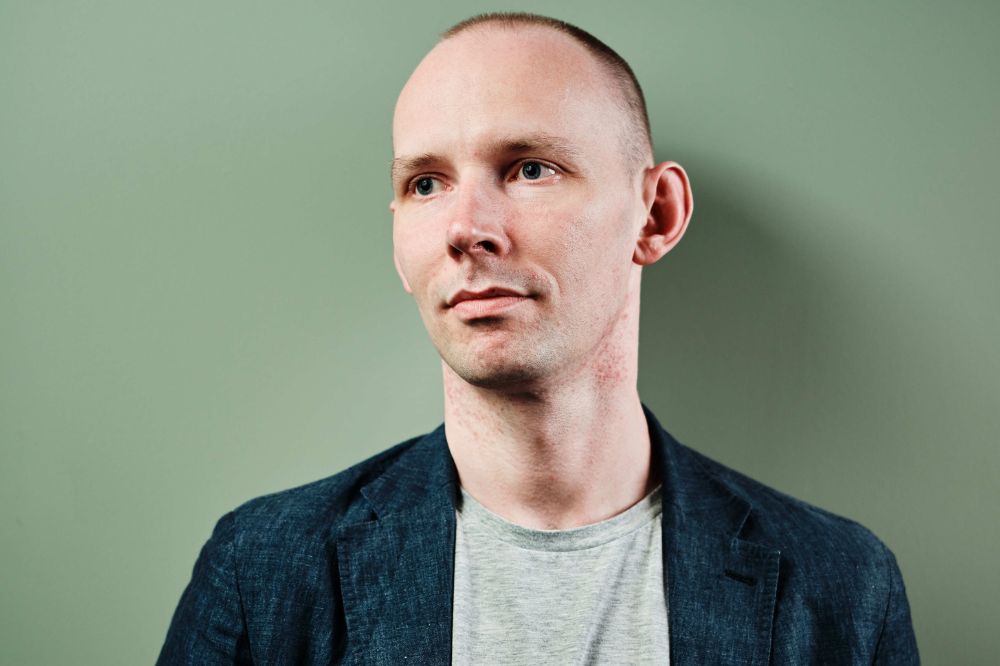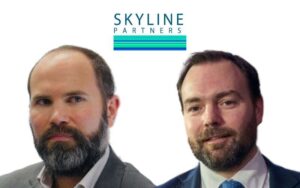"From retrospective to prospective" – CEO on AI’s role in the shifting risk management industry

“From retrospective to prospective” – CEO on AI’s role in the shifting risk management industry | Insurance Business America
Risk Management News
“From retrospective to prospective” – CEO on AI’s role in the shifting risk management industry
“I actually view AI as an evolution, not like a revolution”
Risk Management News
By
Kenneth Araullo
There are few things more divisive in the world today than the discussion surrounding the continued proliferation of generative artificial intelligence (AI). Spurred on by the popularity of generative AI platforms like ChatGPT and DALL-E, and its seemingly untenable position as a superior entity when it comes to activities such as art and – unfortunately for this writer – writing, the arguments for AI have been more pronounced and nuanced as it has begun to seep into more major industries.
While those more outspoken in the news or on social media view it as something that will eventually supplant the human workforce, some of those entrenched in the technology see it as something that will create better opportunities. In conversation with Insurance Business’ Corporate Risk channel, Cytora CEO and co-founder Richard Hartley said that AI, just like any other technology, will go together with the human element to “break down barriers of entry of different jobs” in various sectors.
“I really view it as similar to me with a mobile phone; I’m more productive with it than I am without it. Human plus AI is going to lead to higher productivity and higher opportunities for those people,” Hartley said. “I’m sure in some very commoditized areas, it will result in some jobs not being as available, but in the vast majority, I think it will just increase productivity and make people more effective and efficient.”
Citing the transportation industry as a close parallel, Hartley said that it used to be a smaller industry, and that it can only be afforded by very wealthy people.
“As that technology became more and more accessible, and the price reduced, more and more people could drive, and it became accessible and available to many people,” Hartley said. “My view on pretty much all technology is that it creates opportunity. Ultimately, whenever you apply a technology to a market, that market gets so much bigger. You think about this in all sorts of ways.”
Working in the industry a “pure discovery process”
Cytora, an insurtech which specializes in AI-driven solutions for insurers such as Allianz, Beazley, Markel, and others, has been around circa 2015. From its inception, the firm has been focused on using AI to bring together large amounts of unstructured data to, as Hartley puts it, “focus, connect, and operationalize that data into the decision-making process,” in addition to the risk prediction element.
However, the growth is not without its pains, and Hartley said that transferring all these learnings into the insurance industry has been the most challenging, describing it as a “pure discovery process.”
“When you start anything, including a company, there are times when you don’t know most things. It’s a discovery process, right? We’ve never worked in the insurance industry before so that was a pure discovery process,” he said. “It took us many years to really figure out the difference between a superficial problem and an acute problem to solve that really mattered to people.”
He also outlined some pains in the skills development area, and the time it took to successfully execute the firm’s vision. Hartley described Cytora as a firm that focuses on the commercial and specialty insurance markets, helping businesses digitize their workflows and streamline their renewal process, while at the same time helping them write more risk without the costs and having more control over the risk selection and risk decision making. Even with cutting-edge AI tech on their hands, these aspects will not come together without the right people behind it.
“A big part of that was assembling a great team that could really complement one another, including people from the industry that had a really deep understanding of the domain. I think we’ve taken some time to bring together people on the technology side with people who are from the actual market who understood the nuances of commercial insurance,” Hartley said.
Customer value was also a particular concern, as Hartley described their client base as “rational.”
“They will buy the product if it does create value; they won’t buy the product if it doesn’t create value. You really have to be clear on the value you provide. Also, keep changing the product, until you can really answer ‘yes’ to the question of ‘is your product valuable.’ That’s probably been, I think, the biggest learning today,” he said.
“An evolution”
For an industry that’s more exposed to risk than anywhere else, Hartley described the current iteration of AI in insurance as “an evolution,” as opposed to “a revolution.”
“I think recently, with the advent of generative AI, we’ve seen a real acceleration of capabilities in that space. It offers a significant opportunity, and there are different areas of value. I think one is focused on productivity. I think AI can basically help insurance companies do more,” he said.
The technology’s value proposition, according to Hartley, lies in its ability to handle volume. An AI-driven industry will be able to write more risks, and this is an important aspect given the projections for the insurance industry in the future.
“If you’ve read recent reports from Swiss Re, they’re projecting that the insurance premiums will maybe double by 2040. That’s really driven by climate change and the increased level of volatility, the increased levels of risk. I think there’s a huge opportunity to use the increased capability of AI to increase the volume of risk that insurance companies can write, and at the same time help them identify the right risks for them based on their appetite, and make sure they’re optimizing decisions on those risks,” Hartley said.
Stressing once again that it takes two to tango, – or in this case, underwrite – Hartley said that Cytora believes that the equation will still need real people behind it, despite the worries of the masses.
“We very much view this as a ‘person and machine’ equation where you absolutely need underwriters to be involved. You need people who have lots of expertise and many years of experience; they can really be enabled by AI. It’s going to be interesting – looking at writers, for example, my sister is a writer. Technology can help her write better, write faster, change the style, etc. Very similar to how it can be in insurance as well, where it’s not replacing the person, it’s very much assisting and enabling them to do more and to do better,” he said.
Regulations and competitions
While he has touted the technology as something that will drive risk management forward, Hartley is also aware that continued proliferation without oversight will lead to future troubles. In particular, he highlighted decision-making as something that should be viewed seriously if artificial intelligence continues to grow in scale.
“It requires a regulatory framework that governments need to apply to AI to make sure it’s being used in the right areas, particularly in the decision-making context… Making sure that decisions that are made by AI are fair, and they’re not biased. The role for governments is to provide that regulatory framework similar to how they would regulate other industries. I think that’s important,” he said.
In addition to regulations, he also said that competition should be more widespread in the space, saying that it’s “dangerous” for the industry if only one company – or country – has AI capabilities.
“I think it’s great that there are many companies developing this… You look at Google and OpenAI, that competition is very healthy. I also think it’s really important that different states and different countries invest a lot in the development of AI so geopolitically, there can be a degree of competition and parity around it,” Hartley said. “I think that combination of competition plus regulation should set the conditions for a productive versus an unproductive development in the future.”
“From a retrospective to a prospective approach”
As we move into a more digitized future, Hartley said that there will be a major shift in the insurance industry, particularly in the way the sector will view risk.
“The major shift, I think, is risk will be understood in a much more streamlined way. When you think about how risk is done today, it’s often very expert-driven, where a risk expert will come to a business, and they’ll walk you through different frameworks and give you advice on what the exposures and the risks are. As we move to the future, that will be much more accessible to people, and on a more dynamic basis,” he said.
Citing wildfires and cyber risks as examples, Hartley said that the industry will begin take a more “dynamic” approach to risks.
“I think the major shift will be moving from a static to a dynamic approach, and moving from a retrospective, backward-looking approach to a much more prospective, forward-looking approach. I think that will be enabled by the availability of data, and the availability of things like AI to process that data at a scale,” he said.
With how fast generative AI has been growing, it’s not entirely outrageous to say that this future might be closer than we think – if it’s not already here. That said, Hartley and Cytora are sticking to their mission, one involving a “much bigger and better risk and global insurance industry,” and one where the firm can help close the protection gap to move away risk from businesses that do not want it.
“I think we’re at a really important point in that regard, because of three things: we have the availability of data, in a way that’s increasing year on year. We also have the availability of processing power in the form of AI to find insights, where you can act on that data. Finally, in the context of climate change, we have a moment of reckoning where we do have to act now, so there’s that sense of urgency and need to actually understand and reduce risk in a much more important way than it has been for the last century,” he said.
What are your thoughts on this story? Please feel free to share your comments below.
Keep up with the latest news and events
Join our mailing list, it’s free!







